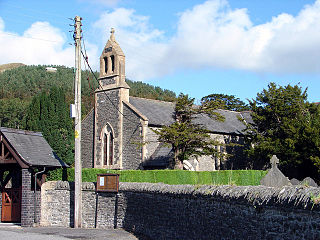Related Research Articles

Earl of Lisburne is a title in the Peerage of Ireland. It was created in 1776 for Wilmot Vaughan, 4th Viscount Lisburne. He represented Cardiganshire and Berwick-upon-Tweed in the House of Commons and held minor governmental office.

John Francis Harcourt Baring, 7th Baron Ashburton,, was a British merchant banker who served as chairman of British Petroleum from 1992 to 1995. Lord Ashburton also sat on the boards of Jaguar Cars, Dunlop Rubber, and Royal Insurance.

This is a list of people who served as Lord Lieutenant of Cardiganshire. After 1780, all Lord Lieutenants were also Custos Rotulorum of Cardiganshire. The office was abolished on 31 March 1974, and replaced by the Lord Lieutenant of Dyfed.
This is a list of people who have served as Custos Rotulorum of Cardiganshire.

Elizabeth Wilmot, Countess of Rochester was an English heiress and the wife of John Wilmot, 2nd Earl of Rochester, the "libertine". She was the daughter of John Malet, of Enmore Manor, and Unton Hawley, daughter of Francis Hawley, 1st Baron Hawley.

Wilmot Vaughan, 1st Earl of Lisburne, of Trawsgoed, Cardiganshire, known as Viscount Lisburne from 1766 to 1776, was a Welsh peer and politician.
John Vaughan, 3rd Earl of Lisburne, known as the Honourable John Vaughan until 1820, was a British soldier and Member of Parliament for Cardigan Boroughs.
Ernest Augustus Vaughan, 4th Earl of Lisburne, styled Viscount Vaughan from 1820 to 1831, was a prominent landowner in Cardiganshire, Wales, who served from 1854 until 1859 as a Conservative member of the House of Commons.

Trawsgoed is both a community and an estate in Ceredigion, Wales. The estate is 8 miles (13 km) southeast of Aberystwyth, and has been in the possession of the Vaughan family since 1200. The Vaughans are descended from Collwyn ap Tangno, founder of the fifth noble tribe of North Wales, Lord of Eifionydd, Ardudwy, and part of Llŷn, who had his residence on the site of Harlech Castle.
Edward Vaughan was a Welsh lawyer and politician who sat in the House of Commons from 1679 to 1681.
John Vaughan, 1st Viscount Lisburne, of Trawsgoed, Cardiganshire, was a Welsh nobleman.

Saint Afan's Church (SN68387192) is located in Llanafan, 8 miles (13 km) east of Aberystwyth, Ceredigion, in Wales.
This article is about the particular significance of the year 1766 to Wales and its people.
This article is about the particular significance of the year 1762 to Wales and its people.
This article is about the particular significance of the year 1721 to Wales and its people.
Events from the year 1755 in Wales.
This article is about the particular significance of the year 1722 to Wales and its people.
John Vaughan, 2nd Viscount Lisburne was a Welsh landowner and Whig politician who sat in the British House of Commons from 1727 to 1734. Apparently a heavy drinker, who kept several mistresses, he informally separated from his second wife in 1729 after she had an affair with his land agent. His spending badly impaired the financial soundness of his estate, and his brother and successor had to contend with the claims of Lisburne's wife's son on the estate.
Wilmot Vaughan, 2nd Earl of Lisburne, styled Hon. Wilmot Vaughan from 1766 to 1776 and Viscount Vaughan from 1776 to 1800, was a Welsh landowner and Irish peer.
Ernest Edmund Henry Malet Vaughan, 7th Earl of Lisburne KStJ, of Trawsgoed, Cardiganshire, was a Welsh nobleman.
References
- A List of the Colonels, Lieutenant Colonels, Majors, Captains, Lieutenants and Ensigns of His Majesty's Forces on the British Establishment. London: Thomas Cox, Charles Bathurst and John Pemberton. 1740.
- Dalton, Charles (1912). George the First's army 1714-1727. Vol. 2. London: Eyre and Spottiswood.
- Morgan, Gerald (1993). "The Trawsgoed inheritance". Ceredigion. XII (1): 9–40.